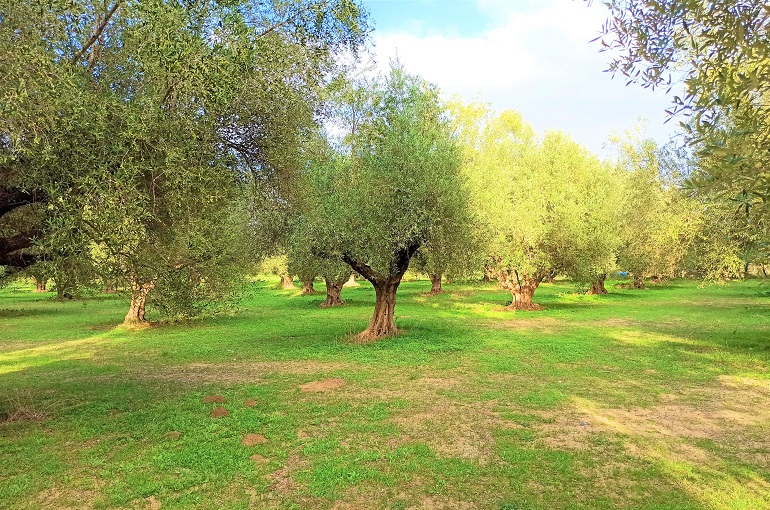6 mistakes that decrease Olive Oil’s Quality

This post is also available in:
This post is also available in:
![]() Français (French)
Français (French) ![]() Deutsch (German)
Deutsch (German) ![]() Nederlands (Dutch)
Nederlands (Dutch) ![]() हिन्दी (Hindi)
हिन्दी (Hindi) ![]() العربية (Arabic)
العربية (Arabic) ![]() Türkçe (Turkish)
Türkçe (Turkish) ![]() 简体中文 (Chinese (Simplified))
简体中文 (Chinese (Simplified)) ![]() Italiano (Italian)
Italiano (Italian) ![]() Ελληνικά (Greek)
Ελληνικά (Greek) ![]() Português (Portuguese (Brazil))
Português (Portuguese (Brazil))
Nowadays, more and more olive farmers focus their efforts on increasing their precious olive oil quality.
To achieve this, we need to avoid six commonly made mistakes that can lead to quality deterioration of olives and thus the produced olive oil.
Unsuccessful or no control of insect pests and plant diseases
It is common to leave the crop entirely to its fate and only visit the olive grove during the harvest. Both the crop and its yield are in danger during autumn, especially when humid and rainy weather. In these conditions, diseases such as olive anthracnose (Colletotrichum gloeosporioides) can spread rapidly and degrade all production even 1-2 weeks before harvest, and while everything looked ideal.
Among the pests that threaten the crop, Dacus (Dacus oleae) has the most destructive effect causing a dramatic and immediate deterioration of olive oil’s quality.
Recently in some olive groves of Crete, the infestation of Dacus and Gliosporium resulted in a dramatic increase in olive oil’s acidity. As a result, due to the poor quality of the final product, about 80% of the yield in certain areas (with exceptional olive groves) was characterized as lampante olive oil and was directed for industrial use.
Contamination of the olive oil
Quality should come hand by hand with safety. Besides pesticide residues that can be detected in olive fruit, toxic residues can contaminate the product. More specifically, there is a risk of contamination of the fruit, soil, or water source during pruning or harvesting, by hydrocarbon mineral oils contained in lubricants (e.g., chain oil) of the machines used. This, of course, will have immediate consequences for our product. For this reason, olive growers often prefer to use vegetable lubricants that decompose entirely in the soil in a short time and are considered safe for human consumption and the environment.
Reckless application of fertilizers
Each field is unique and has different needs. A farmer can identify them by conducting a soil analysis. Based on these findings, he should form a balanced fertilization plan for his/her trees.
Especially in the case of olives, over-fertilization or application of the wrong type of fertilizer can contribute to alkalinization or acidification of the soil, which will degrade our product.
The reckless use of synthetic fertilizers may increase excessively the amount of phosphorus in the soil. That would create a series of problems in the physiology of the tree and the fruit ripening.
Delay of the harvest
Many amateur farmers wrongly believe that “the later they harvest the olive, the better”. In fact, they think that the longer the olive fruit remains attached to the tree, the more oil it will accumulate over time. However, harvesting later than the ideal maturity stage of the fruit directly and adversely affects the product’s quality, and of course, does not increase the oil content. Furthermore, this delay in harvest directly impacts both the organoleptic characteristics of olive oil and its nutritional value. As the fruits overmature, the concentration of certain substances, which are considered essential quality factors, like aldehydes and polyphenols, drop.
There is a long interval between the harvest of the olives and the extraction of the oil.
Many people wonder why oil mills are crowded and farmers line up in long queues at the end of a harvest day. This long wait in line often becomes more tedious than the harvest itself. They could not let say, pick all the olives in two weeks, store them in their farm and take them to the mill once in the end? The answer is no.
If it takes time from harvest to oiling, microbial fermentation begins, and there is a risk of fungal growth, increased acidity, and degradation of organoleptic characteristics. No one can accurately quantify this damage. However, if someone has the possibility, it is better to bring the fruit directly for oil extraction. We should also keep in mind that during rush periods, the oil extraction could be delayed 1-2 days due to work overload in the mill.
Storage conditions of the olive oil
We should consider olive oil as a living product that can degrade at any time due to physicochemical processes (e.g., oxidation). As a result, it is vital to store it properly, protected from oxygen, sunlight, and high temperatures. Therefore, we store it in opaque stainless steel packages at a constant temperature below 18 degrees Celsius (64.4 degrees Fahrenheit). Finally, we need to make sure that the packages are full and airtightly closed.








































































